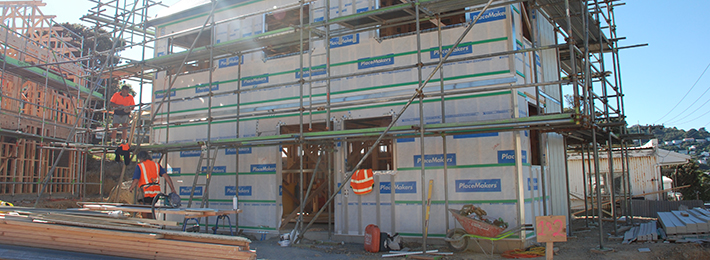What new LVR restrictions mean for builders
29 Sep 2016, Featured, Industry News

The Reserve Bank’s proposed lending restrictions on homebuyers are likely to have little effect on the construction industry, due to loans-to-construct exemption
With New Zealand home to one of the highest house-price-to-income ratios in the world, the Reserve Bank has introduced new lending restrictions for homeowners to curb investor activity and counter the threat posed to the economy by elevated levels of household debt.
With the aggregate household debt-to-income ratio at around 163% (slightly above its pre-GFC peak) the central bank believes that a sharp decline in house prices is a key risk to the financial system, households and the broader economy.
While current low interest rates make servicing debt easier, elevated debt levels within the housing sector could become a problem if lending rates increase or economic conditions deteriorate.
The proposed restrictions took effect at the start of October and consist primarily of:
- Applying a nationwide ‘speed limit’ for all investor lending, permitting no more than 5% of lending at a loan-to-value-ratio (LVR) of greater than 60% (ie a minimum deposit of 40%).
- Applying a nationwide ‘speed limit’ for all owner-occupier lending, with no more than 10% of lending permitted at a LVR of greater than 80% (ie a minimum deposit of 20%).
- Loans that are exempt from the existing LVR restrictions, including loans to construct new dwellings, will continue to be exempt for both investors and owner-occupiers.
- First-home buyers that meet the criteria can undertake high-LVR lending via the government’s Welcome Home Loan scheme, which will continue to be exempt from the LVR policy.
Business as usual for builders
President of the New Zealand Certified Builders Association, Grant Florence, doesn’t expect the restrictions to have a marked effect on the building industry.
“We worked hard to get the construction of new dwellings exempted from these restrictions when they were first introduced a while back, so as a market we’re not really impacted,” Mr Florence said.
“There’s a potential spin-off that some people with a lower deposit may look to build rather than buy an existing home. With the industry so busy right now, it’ll be pretty hard to identify any actual effects they might have.”
Mr Florence added that land prices were still the major driver of house price increases, which dwarfed any cost savings that could be found in the building process to help reduce prices.
Register to earn LBP Points Sign in



